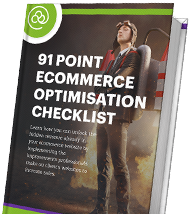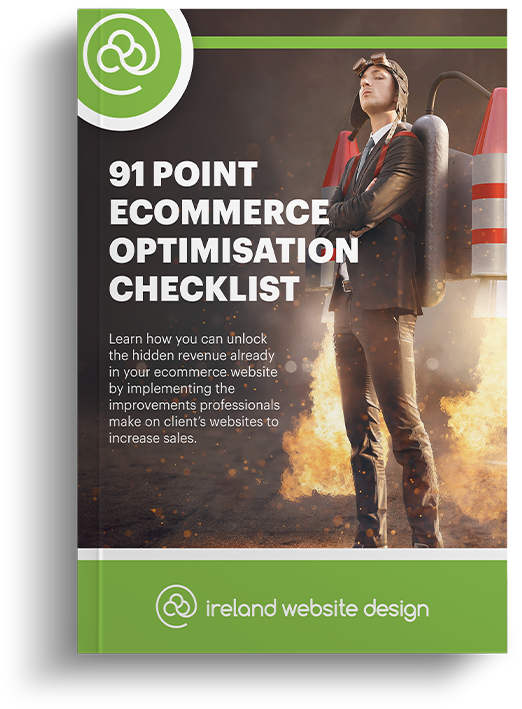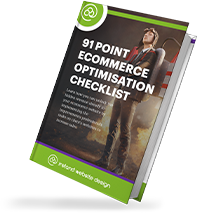For most of your existing customer base and potential customers, the first impression they get of your eCommerce business comes from your website. Within a matter of seconds, your website visitors have formed an opinion that could impact how long they’ll browse, whether they’ll engage, and if they’ll come back for more in the future.
94% of first impressions are made based on your website’s design, so in these first crucial moments, a lot depends on your design – from the overall design of your website to each of its individual web pages.
That said, it takes more than great web design for your brand to make a positive impression on your target audience.
Your eCommerce website should also function and flow effortlessly so that online visitors will stay engaged with your website longer.
Balancing beautiful visuals and flawless functionality will help you create a seamless user experience, bolstering organic growth, customer acquisition, and customer retention.
Improving your website is an important part of your internal growth strategy, allowing you to get ahead and stay ahead of the competition – and look damn good while you’re doing it!
Let’s explore the key elements of web design so you can achieve the kind of rapid growth your company has set its sights on.
The 7 top innovative web design features for robust business growth strategies
When you start outlining specific growth strategies for your small business or eCommerce platform, your website should always be a priority.
Here are our top web design tips to help you with your market expansion and marketing efforts.
1. Mobile optimisation
These days, more than half of online shopping in Ireland happens on a mobile device. That means, if your website works beautifully on a desktop but isn’t mobile responsive, you might be missing out on a whole lot of folks looking for what you’ve got to offer!
If a potential customer visits your website on their phone or tablet and can’t navigate or view a specific web page with ease, they’re going to abandon your site pretty swiftly.
In fact, it’s becoming more common for web designers to design the mobile version of the website first – creating quick and simple mobile templates and then making them responsive to desktops – to keep up with the skyrocketing demand for mobile eCommerce.
This has meant fewer complex eCommerce website designs and more simple, easy-to-navigate websites in the market, offering an even better user experience and faster loading speeds.
2. Thumb-friendly interface
As well as being optimised to load effectively on mobile devices, your website must be easy to use on a smaller device.
How we use our phones has a direct impact on your website’s layout and design, affecting how we navigate any web page on the go.
Making a website thumb-friendly means putting the navigation bar, menu, and even the contact buttons in the space where your thumb can reach easily, usually around the centre of the screen.
Considering how people will view your eCommerce website and responding to their needs on a design level will make a huge difference. These efforts will significantly improve the user experience for your online visitors and increase the likelihood that they’ll turn into paying customers.
3. Consider typography
Typography in web design is so much more than just selecting a font that aligns with your branding.
The style, size, colour, and the placement of text on the screen can also influence the way your target market perceives and experiences your business and retail stores online.
Many web designers are now favouring oversized lettering and bold typography to quickly draw the audience’s eye toward their client’s brand name and unique selling point (USP).
Visitors will always remember what was written in bold over the fine print. It also makes the most vital information clearer and more accessible for everyone – especially those with visual impairments, or who have difficulty processing written text.
Create a seamless user experience that’s easier for everyone to read by:
- Choosing a font that works on all screen sizes
- Avoiding cursive script or ornate fonts
- Using title case and sentence case correctly (avoiding all caps if possible)
4. Asymmetric layouts
Websites are generally based on a grid system to help web designers form a cohesive layout for all the information that needs to be outlined in a specific order.
That said, depending on your eCommerce niche, there’s room to try something a little leftfield in terms of layout if you’re after something more unique and stylish.
Asymmetric layouts break down the traditional grid arrangement and present each design element more organically, drawing the eye to key points on the page.
This technique has a certain appeal, and may give a more modern and creative feel to your eCommerce website.
When considering an asymmetric layout, it’s super important to understand your audience, their needs, and how they need information to be presented. Otherwise, you may wind up losing a few in an attempt to appeal to them from a different angle.
5. Dynamic content
Attention spans aren’t what they used to be. Today, you must capture your audience’s attention the moment they visit your eCommerce website – and then hold onto it for dear life!
People on the web want to get the information they need as quickly and easily as possible. Otherwise, they’ll take their attention – and their business – elsewhere.
Videos, animations, dynamic illustrations, and 3D features are a great way to engage your target audience and convert them into paying customers.
Using dynamic content instead of a static background gives life to your platform, encouraging visitors to stay longer, even if it is just to watch the full length of a video.
Make sure your videos and other dynamic content are always relevant to your customers, providing value every step of the way. Keep it simple and engaging, and always film and edit your content to the highest possible standard. Otherwise, your efforts may wind up having the opposite effect!
6. Minimalist design
Often, less is more when creating a professional eCommerce website to encourage business growth.
You don’t want to overwhelm your potential customers with too much choice or information, so consider keeping things as minimalist as possible while still providing them with everything they need in a clear and compelling way.
This design technique removes any clutter that distracts the viewer, keeping them focused on what tasks you want them to engage with or what steps you want them to take in the direction of conversions.
It can be tricky to find the right balance.
Professional web designers and developers can help you create an effective minimalist design by:
- Using fewer design elements for easy scanning
- Breaking information down so it’s easier to process
- Choosing a consistent font that’s recognisable and easy to read
- Simplifying your colour palette to avoid overwhelm
- Creating intuitive navigation in the least amount of clicks
7. Voice user interface
This is an essential element for your business model and growth strategy as it makes your eCommerce website accessible to people with disabilities or issues accessing the web.
Voice user interface not only makes it easier for more people to engage with your content, but it also allows you to get to know your audience on a deeper level, and continue providing them even more value.
As they search for your products and services and navigate your website, VUI helps you understand your customers’ needs better. You can use this valuable information to tailor your product offerings to meet your customers’ expectations and give them the best possible buyer experience.
Streamline your business growth strategy with a clean, modern website from Ireland Website Design
At Ireland Website Design, we offer everything you need to grow your eCommerce business and increase your market share successfully.
From website design and development to professional digital marketing solutions, we’ve got your business expansion covered.
Get in touch today to schedule a free consultation and take the next step towards your eCommerce success.




